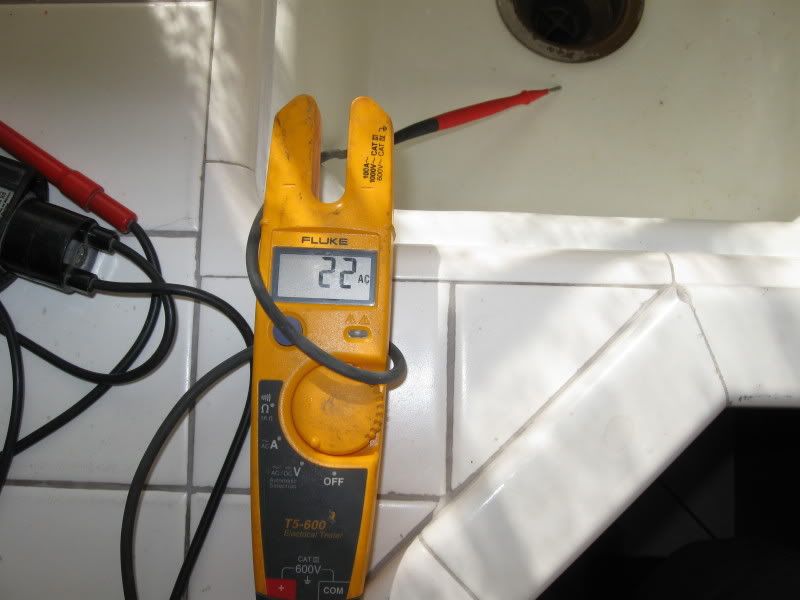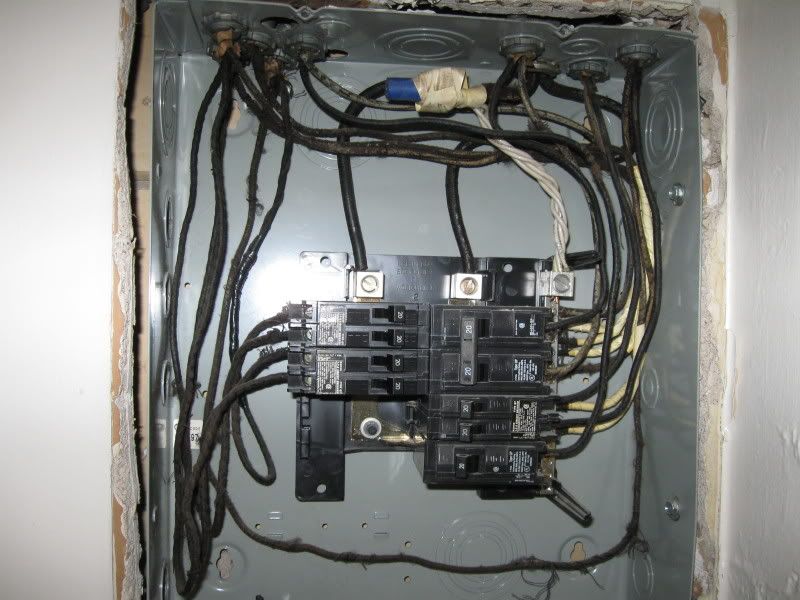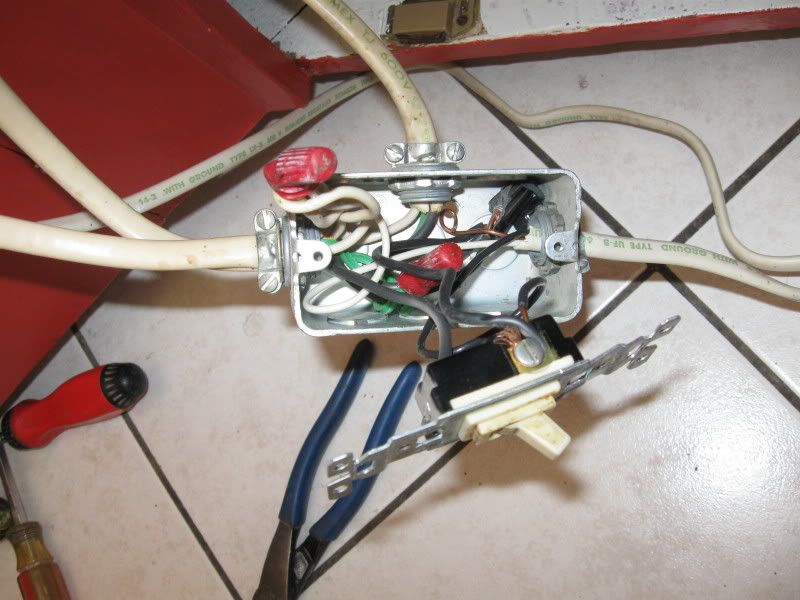I was at a residence today starting a service relocate when the customer came out and asked me if I could take a look at a problem. She is getting shocked off her cast iron kitchen sink.
I pulled off of my task because these types of calls seem extra dangerous to me. I once had 120V coming off my own shower plumbing and I have seen 120V a couple other times on the plumbing.
I checked between the drain and the faucet and g0t 20 something volts. Not enough to kill her....yet. Old house wired primarily with BX.
One of the issues is finding which direction the voltage is coming from so I strung a ground wire outside and attached it to the panel. I read 22 volts from the sink/drain (other lead on the fluke is attached to the ground wire)

I found the offensive circuit originating in this panel (a whole nother post)

and there was obviously a JB in the attic somewhere as all 3 original receps on the circuit had only 2 wires in them.
I took apart some handymans work from the 60's (disposal switch under the cabinet) and cleared the sink voltage. I found this mess and temporarily corrected it, thinking the problem was the broken wirenut contacting a ground wire.

Nope.
I found that when I disconnected the dishwasher feed, the voltage went away.
Pulled DW all the way out (no acces to the wiring) unpluged it and the volts went away. Hmmm....bad DW???...somehow leaking voltage ??? Obvious factory cord (never seen that), no visable JB.
I plugged a small microwave into the DW recep (which some idiot buried in the DW cavity I read 6 0r 8 volts at the sink.???
I read 6 0r 8 volts at the sink.???
Pulled out the HUGE refer which was STUFFED into its space. There wasn't 1/16" on either side. I found where the handyman got the power for the DW/disp. He pulled from an original 2 prong recep behind the refer. He cut the ground off short and wrapped the terminals of the recep.
Wiring was BX so I had somewhat of a ground at that box. I redid the wiring and attached the gnd to the box. Voltage to sink went away.
I know the issue isn't resolved. I just gave it a better path to follow. I will be back next week to do the service relocate and will have to send someone up to replace some BX.
Until then, I don't think I can fully understand how the voltage was getting to the cast iron sink (PVC trap)
I guess my question is, how the heck did the voltage get thru the DW into the sink?
I pulled off of my task because these types of calls seem extra dangerous to me. I once had 120V coming off my own shower plumbing and I have seen 120V a couple other times on the plumbing.
I checked between the drain and the faucet and g0t 20 something volts. Not enough to kill her....yet. Old house wired primarily with BX.
One of the issues is finding which direction the voltage is coming from so I strung a ground wire outside and attached it to the panel. I read 22 volts from the sink/drain (other lead on the fluke is attached to the ground wire)

I found the offensive circuit originating in this panel (a whole nother post)

and there was obviously a JB in the attic somewhere as all 3 original receps on the circuit had only 2 wires in them.
I took apart some handymans work from the 60's (disposal switch under the cabinet) and cleared the sink voltage. I found this mess and temporarily corrected it, thinking the problem was the broken wirenut contacting a ground wire.

Nope.
I found that when I disconnected the dishwasher feed, the voltage went away.
Pulled DW all the way out (no acces to the wiring) unpluged it and the volts went away. Hmmm....bad DW???...somehow leaking voltage ??? Obvious factory cord (never seen that), no visable JB.
I plugged a small microwave into the DW recep (which some idiot buried in the DW cavity
Pulled out the HUGE refer which was STUFFED into its space. There wasn't 1/16" on either side. I found where the handyman got the power for the DW/disp. He pulled from an original 2 prong recep behind the refer. He cut the ground off short and wrapped the terminals of the recep.
Wiring was BX so I had somewhat of a ground at that box. I redid the wiring and attached the gnd to the box. Voltage to sink went away.
I know the issue isn't resolved. I just gave it a better path to follow. I will be back next week to do the service relocate and will have to send someone up to replace some BX.
Until then, I don't think I can fully understand how the voltage was getting to the cast iron sink (PVC trap)
I guess my question is, how the heck did the voltage get thru the DW into the sink?

